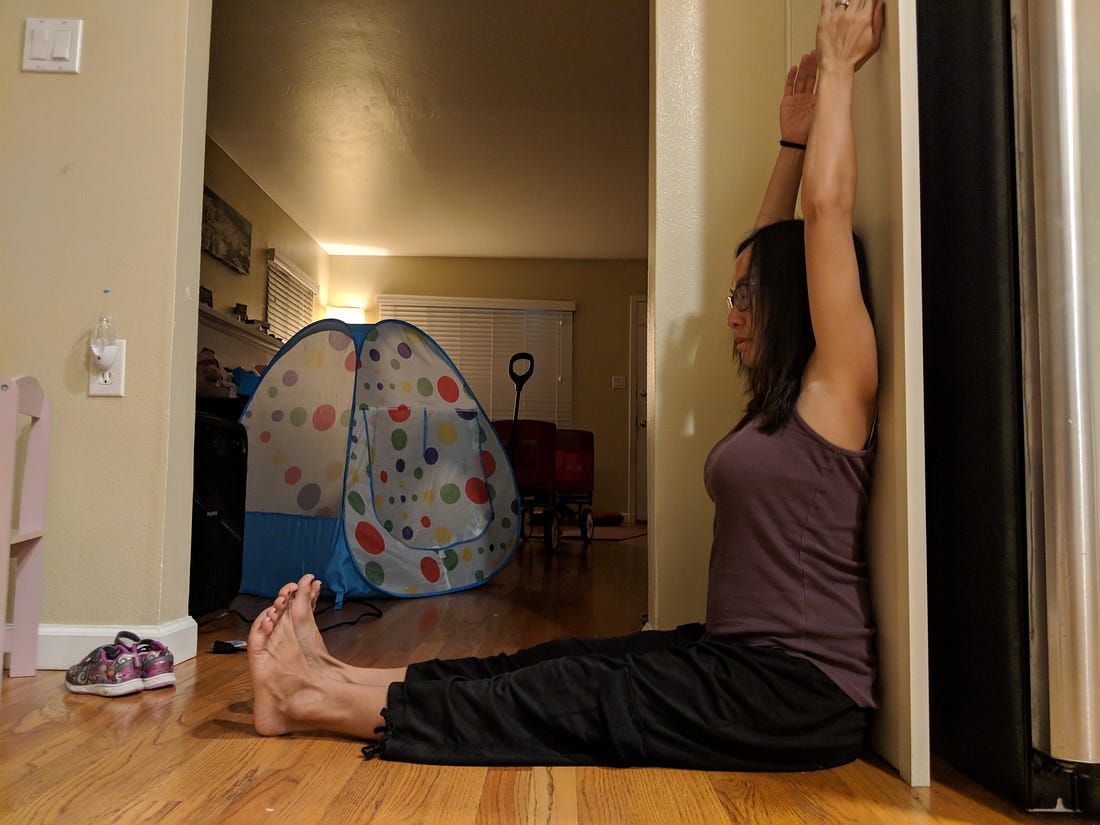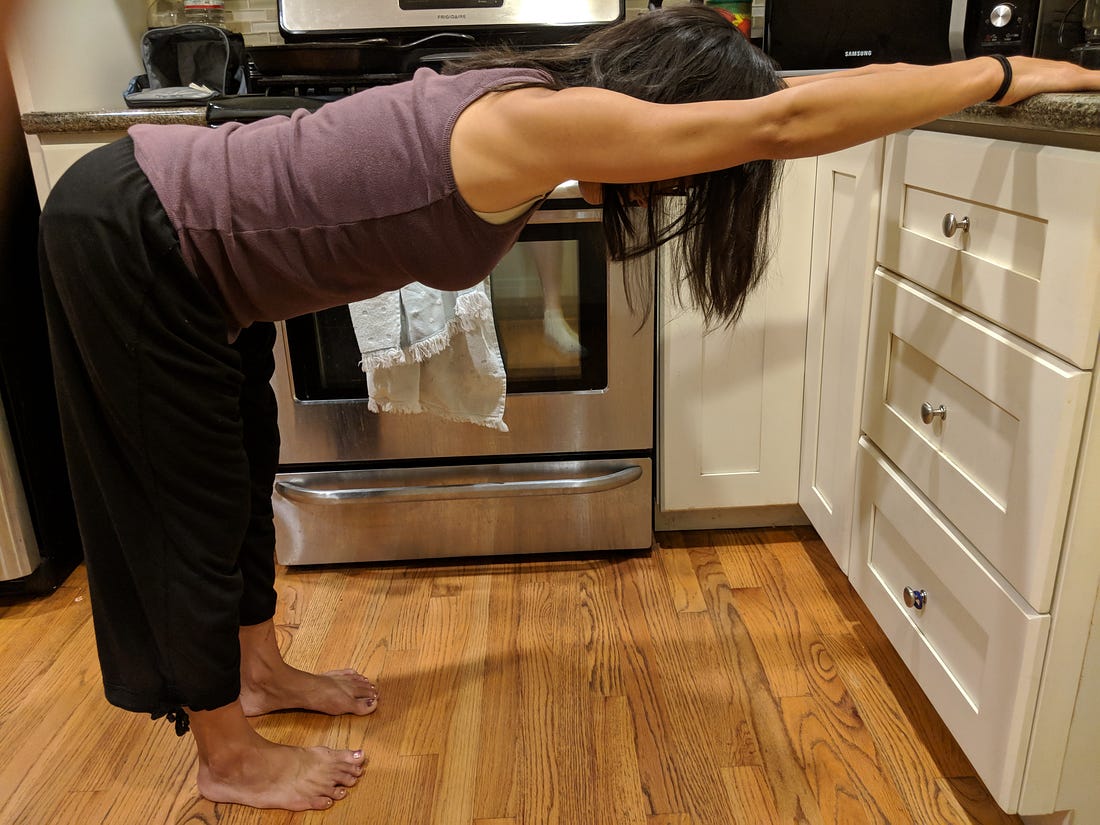a bolster, cushion, or folded blanket can be so helpful in lengthening your spine while seated
“It is the job of the spine to keep the brain alert. The moment the spine collapses, the brain collapses.” -B.K.S. Iyengar
Once I took a yoga class where the teacher described the spine as a string of beads, each bead representing a vertebra. We were all in bridge pose and the teacher wanted to help us to slowly roll into and out of the pose, rather than just pushing up the back off the ground as one solid unit. “Lift your spine one vertebra at a time off the ground. Imagine it is like a string of beads and you’re holding one end, slowly lifting each bead up at a time.”
That simple visual has stayed with me for two decades and what I’ve learned is that, although her description was creative, clear, and memorable, it still took me several times practicing that movement to really feel what else was going on in the body. I found that it helps to try that same movement in different positions or contexts. Part of the magic of yoga is putting your body in different positions relative to the ground and thanks to gravity, it feels totally different. For example, Adho Mukha Svanasana (Downward Dog) is just an upside-down version of Dandasana (Staff Pose) with the arms stretched up, or a sideways version of a counter-top hang:
Iyengar says that the spine keeps the brain alert and I believe that he means good posture keeps the mind sharp. What I’d like to add to that is that good posture in the spine starts in the hips. You’ll notice that someone slouching in a chair is actually just collapsing their hips backwards and the spine follows.
In pregnancy you’ll see the opposite: the pelvis gets pulled forward by a growing belly, so the lumbar spine overarches. Some people have this posture habitually, pregnant or not. It’s not that this position is bad, it’s just that when held chronically so that range of motion in the hips and spine decreases, it adds tension and stress to the joints and muscles.
I’ve always loved the flowing aspects of yoga practice. Two styles of yoga that have influenced me and have this element of fluidity are Prana Flow yoga (Shiva Rea) and TriYoga (Kali Ray). There’s a roundness to the movements in these styles of yoga. Poses exist on continuum, rather than as fixed, perfect forms. I think of bellydancing a little bit when I think of the sequences by these two teachers. So, in honor of these types of yoga, let’s practice a bit with less expectation of the perfect pose and more embracement of the movement in between. After all, it’s not each individual bead that makes a necklace, but the entire set of beads strung together.
Slow-ga
Slow-ga (a.k.a slow yoga) is all about noticing. It is less about doing yoga and more about being yoga. I think of it as forming habits rather than making goals. That’s why I’m going to dare to call the following activity a form of yoga:
Every time you think of checking your phone, stop and feel your feet on the ground (or whatever part of you is on the ground….or couch, or chair, or bed). Take 3 breaths at whatever pace feels natural. Notice how each inhale and exhale feels in the body, but don’t force them to be longer or shorter. Just let the out-breath come from relaxing the body, then wait for that impulse to breathe in and let the in-breath rush in as effortlessly as water follows gravity.
I’m not saying don’t check your phone. Go ahead and check it, but do this first, if not every single time you want to look at your phone, at least 3-4 times each day. I’d love to hear about your experience with this. It’s an experimental proposition I’m making and I myself am going to try it, too, because sometimes I am appalled when I stop to think about how much I look at my phone.
And if you don’t have a cell phone...how old are you? Just kidding, I really meant to say that if you don’t have a phone, I am fascinated and impressed. But really, if you don’t have one, you can apply this slow-ga technique to something else you habitually do all day long. It doesn’t even have to be a bad habit or anything.






